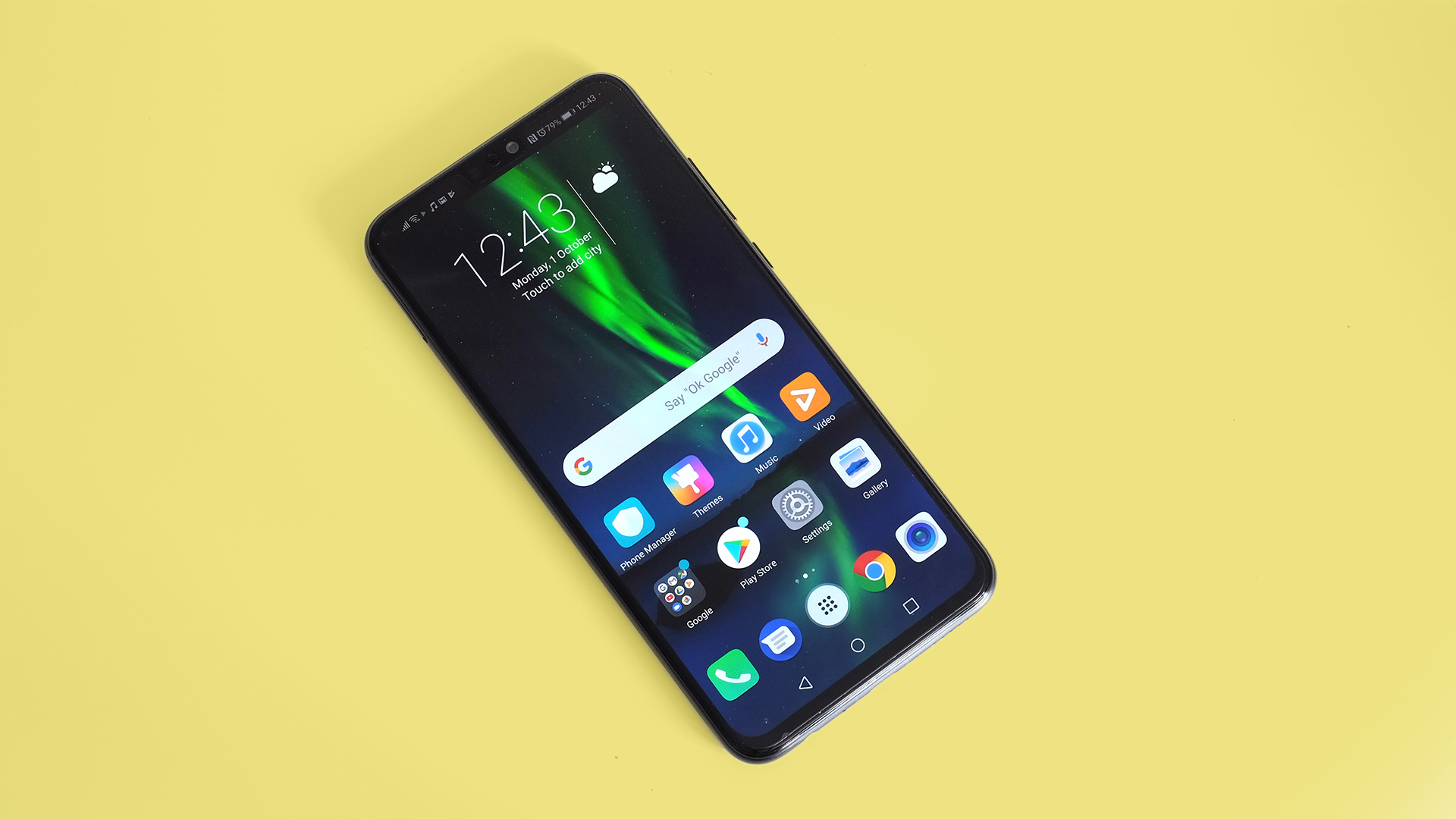Why you can trust TechRadar
Software
- Android 8.1 with EMUI
- Good performance
- Quite a lot of pre-installs
The Honor 8X runs Android 8.1 and Huawei’s EMUI, also seen in every Honor phone. EMUI has many long-standing detractors. Today it is arguably one of the better custom interfaces, though.
It’s far less stripped-back than Pixel UI, the new pure form of Android, but is fairly visually coherent and offers a lot of customization. The first one to juggle: do you want an apps page or not? EMUI does not have one as standard, just home screens, but you can reinstate this Android staple in the Settings menu.
This apps menu is a little different from the norm too. It’s a single vertical scroll, and has an alphabet shortcut on the right hand-side, letting you zip through a very large app collection in no time.

You can also choose the number of app rows and columns on home screens, fiddle with transition animations and use themes. As is often the case, you may be best off leaving the standard theme in place and just picking a wallpaper, as many custom themes lower the tone with questionable icons and fonts. But tastes vary.
As ever, Honor packs the 8X with quite a few extra apps. Some are unwanted, like a selection of games that were only popular years ago. Others are less offensive, such as the wide variety of utilities: a compass, torch app, phone manager and digital manual. They can stay.

The most unusual extras are quite silly, in classic Honor/Huawei form. Party Mode lets you share tunes with other Honor phone users by creating a Wi-Fi hotspot. All the phones then play the same tune through their onboard speakers. Bangin’.
Karaoke Mode lets you monitor your singing through headphones, using the phone’s own mic. It’s not quite the style of karaoke we recognize but the Honor 8X doesn’t ram this feature down your throat, so, fine. We probably won’t use it, but it doesn’t make the 8X worse.
Most important, the Honor 8X and its EMUI software feels great. It’s quick, smooth and responsive, with none of the lag and load waits you get with some phones in the price class below.
Games and video
- Display is great for video
- Not the very best option for gaming
- Reasonable quality, but mono, speaker
A big screen makes the Honor 8X an obvious choice for gamers, but Honor actually offers something stronger, the Honor Play. That phone has a more powerful chipset, which performs better when dealing with very demanding 3D games like Ark: Survival Evolved that you might otherwise play on a PS4 or PC.
Ark, for example, only runs well at medium settings. With the resolution maxed and visual quality at ‘Epic’, the game is more-or-less unplayable.
Take a look at the Honor Play’s specs and you instantly see why it handles games better. Its Kirin 970 CPU has a 12-core Mali-G72 graphics chipset. The Kirin 710 of the Honor 8X has a quad-core Mali-G51. It’s not even close.
The performance difference is largely meaningless when you stream video, though. This is a great phone for video, as the screen is big and vibrant enough to make the idea of watching a whole movie on the thing feasible. Well, if you’re traveling rather than sitting in your living room, anyway.
A local storage video player app is included too, although there’s nothing special about it.

Sound quality is fair, but not stellar. The integrated speaker is reasonably loud, and not too thin-sounding, but there’s just one driver on the bottom edge. There’s no stereo sound here.
We’re glad Honor kept the 3.5mm headphone port, though, so you won’t feel the need to upgrade to a wireless pair if you haven’t already.
Performance and benchmarks
- Octa-core Kirin 710 chipset
- 4GB of RAM
- Good but not class-leading power
How powerful is the Kirin 710, then? Despite landing well below the only fractionally more expensive Honor Play, the Honor 8X is still one of the more powerful phones at the price.
The Kirin 710 has eight main CPU cores, four Cortex-A73s and four Cortex-A53s. Those higher-power Cortex-A73 cores mean the Honor 8X easily outperforms the Moto G6 Plus, perhaps its most compelling rival.
In Geekbench 4 the phone scores 5552 points, which is far higher than the G6 Plus's score of 4,167. The Honor 8X has 4GB of RAM too, matching the Moto.
This RAM isn’t the ultra-fast dual channel stuff you’ll see in today’s top-end phones, but does match the performance level of flagships of a couple of years ago.
Current page: Anything else I should know?
Prev Page Battery life and camera Next Page Verdict and competitionAndrew is a freelance journalist and has been writing and editing for some of the UK's top tech and lifestyle publications including TrustedReviews, Stuff, T3, TechRadar, Lifehacker and others.

